I believe this juvenile Swainson’s Hawk was taken by surprise by what it found in its mouth.
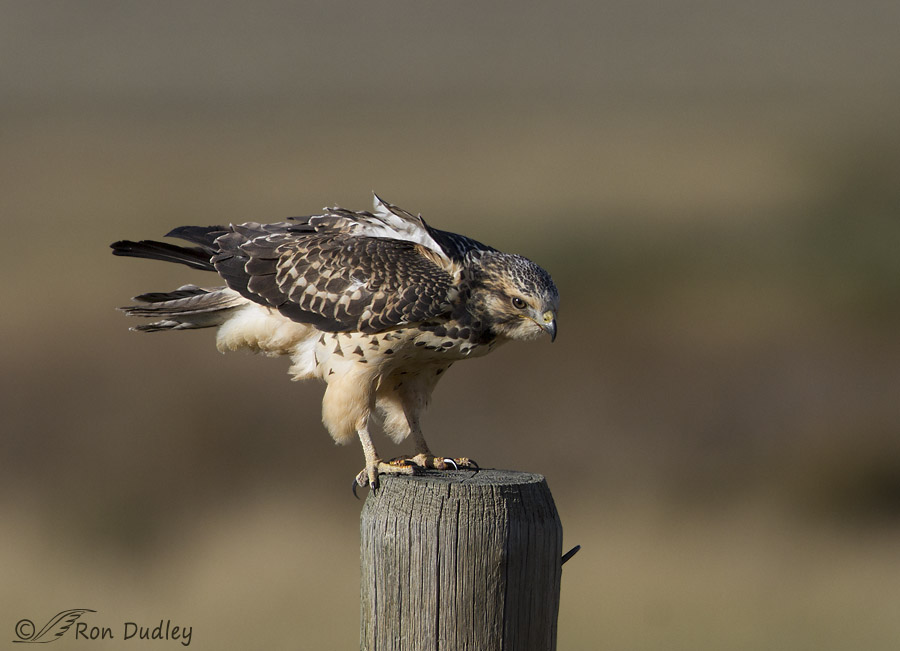
1/2500, f/7.1, ISO 500, Canon 7D, Canon EF500mm f/4L IS II USM +1.4 tc, not baited, set up or called in
I photographed this beautiful hawk in early September of this year in Montana’s Centennial Valley. Here the bird has just completed landing on the fencepost and has barely folded its wings again and is about to stand erect.
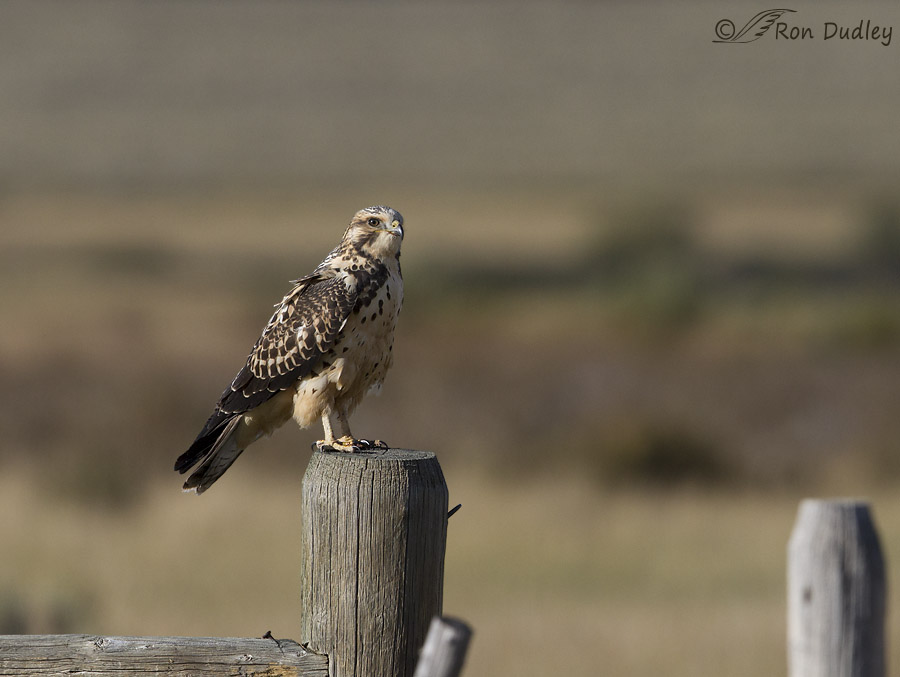
1/2500, f/7.1, ISO 500, Canon 7D, Canon EF500mm f/4L IS II USM, not baited, set up or called in
At that point I made the unfortunate decision to remove my 1.4 teleconverter (tc) so I would be less likely to clip or cut off any body parts when it took off again. If I hadn’t done so I’d have had better detail in the images that follow.
Note: Photographers may be interested in comparing these first two images to get a sense of the difference (in magnification) made by the teleconverter. I used the tc on the first image but not on the second. Both images have been cropped by the same amount (50% of the original image) and my shooting angle and distance to the subject are the same in both shots. You may also notice the difference in background bokeh provided by the increased magnification.
Ok, back to the point of this post…
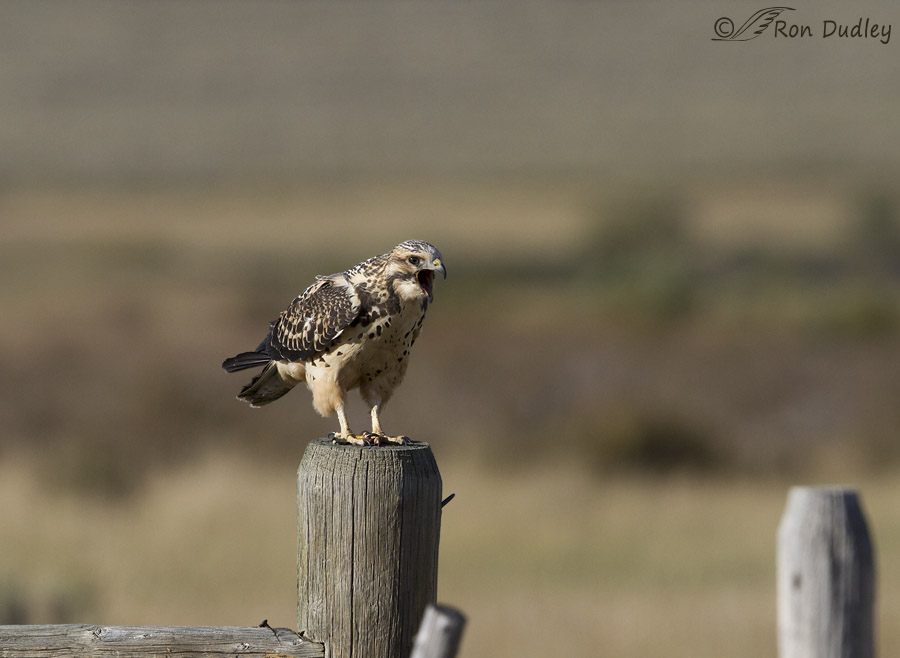
1/2500, f/7.1, ISO 500, Canon 7D, Canon EF500mm f/4L IS II USM, not baited, set up or called in
Suddenly the hawk opened its mouth in what I assumed would be a behavior that I’ve seen and photographed many times before, one that very often precedes the casting of a pellet (you can see the entire process of pellet casting by a Swainson’s Hawk here if you’re interested).
But this time both the bird and I were in for a surprise.
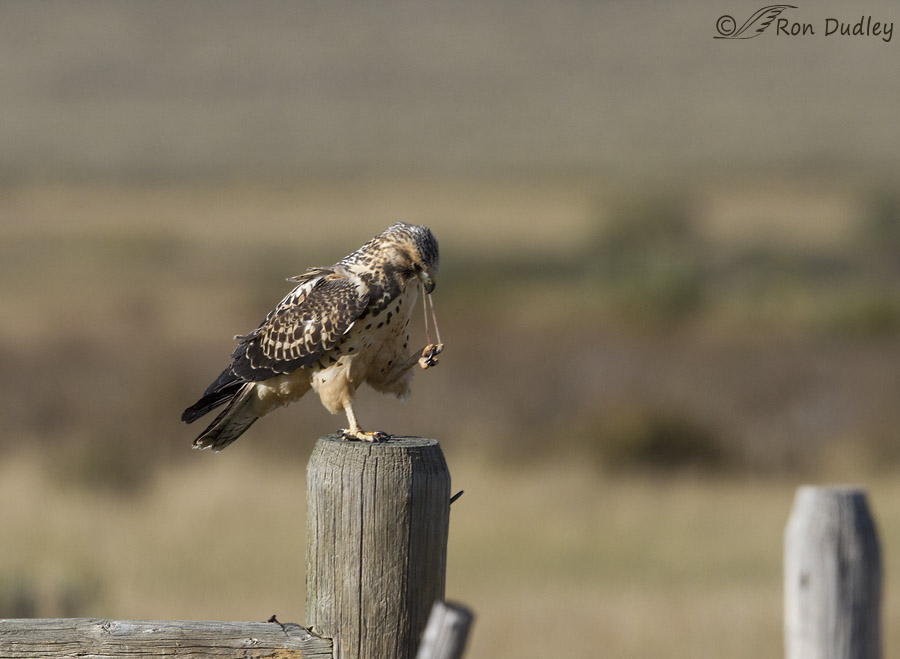
1/2500, f/7.1, ISO 500, Canon 7D, Canon EF500mm f/4L IS II USM, not baited, set up or called in
The hawk reached up to its mouth with its left foot and pulled this out! I can only assume it’s the small intestine of rodent prey that had been in its crop. One part of the intestine (or whatever it is) was looped between two of its toes and the bird struggled with it by pulling down, hard, with its left foot until…
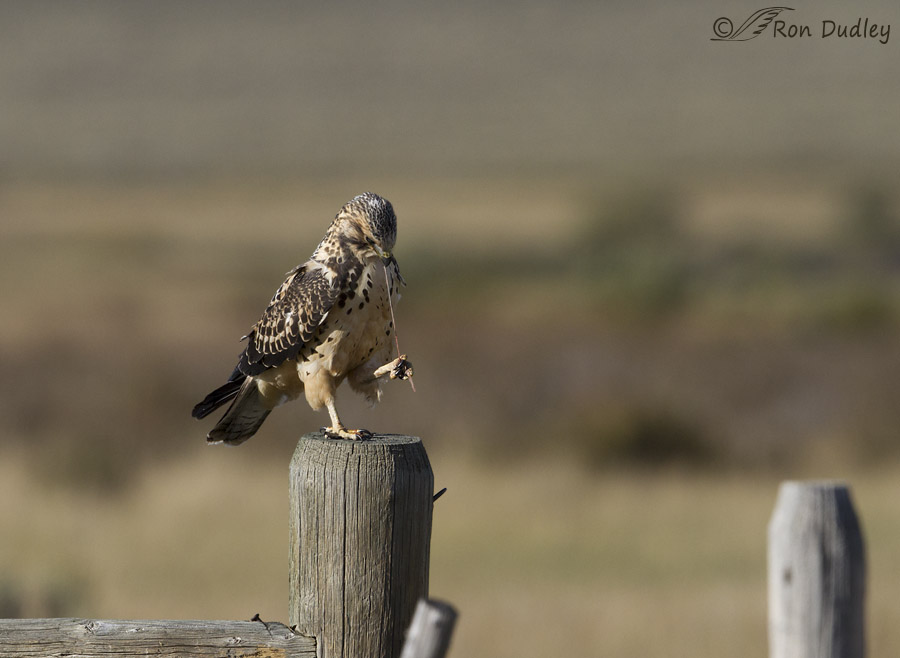
1/2500, f/7.1, ISO 500, Canon 7D, Canon EF500mm f/4L IS II USM, not baited, set up or called in
one of the two strands broke. Then it pulled some more until…
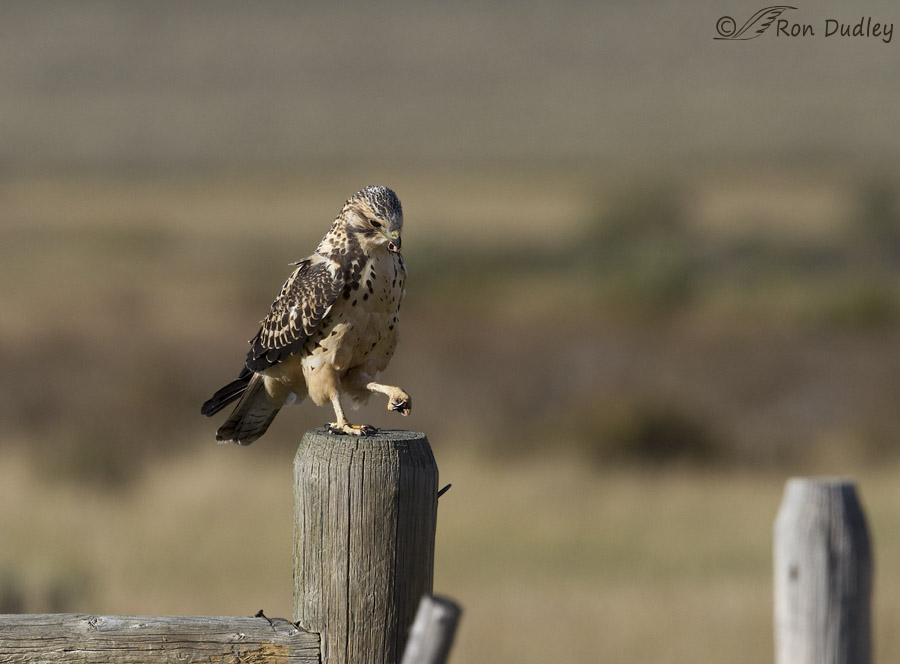
1/2500, f/7.1, ISO 500, Canon 7D, Canon EF500mm f/4L IS II USM, not baited, set up or called in
the other strand broke and snapped back into its face.
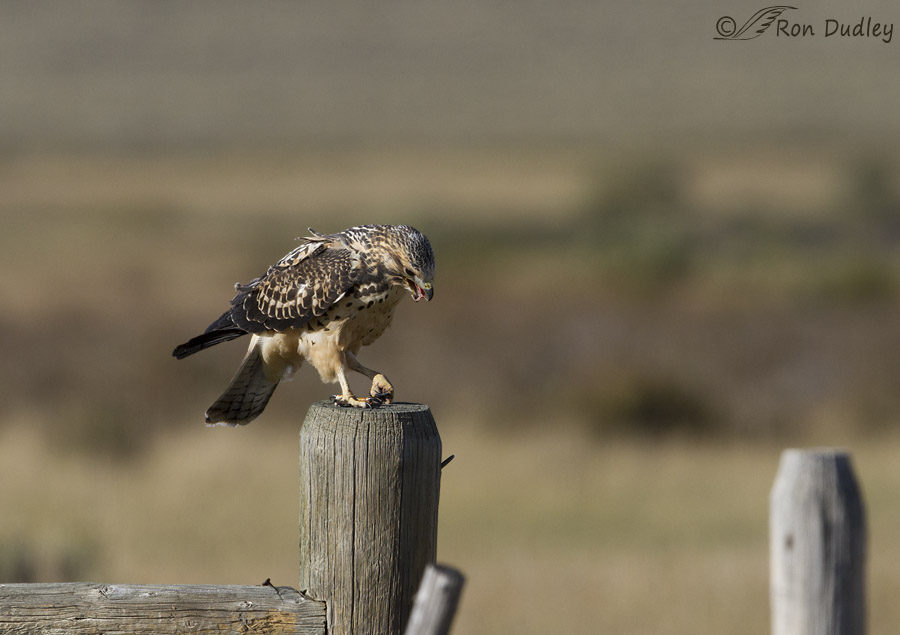
1/2500, f/7.1, ISO 500, Canon 7D, Canon EF500mm f/4L IS II USM, not baited, set up or called in
At that point the hawk swallowed it all again.
If my assumption is correct that the food item was mammalian (or at least vertebrate) intestine then I’m slightly surprised because I’d been watching this bird for days and virtually all I’d seen it eat was grasshoppers (though I know they also consume rodents and other prey, especially during the breeding season).
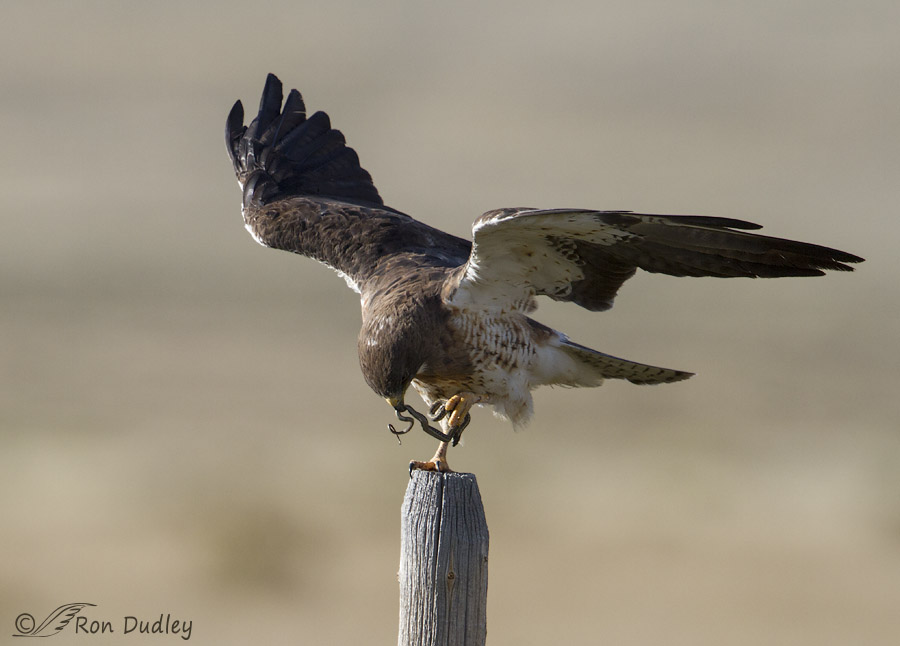
1/1600, f/7.1, ISO 500, Canon 7D, Canon EF500mm f/4L IS II USM + 1.4 tc, not baited, set up or called in
In fact, only 6 minutes earlier I had photographed one of the parents of the young bird as it struggled with and eventually ate this small snake. As to why the juvenile pulled the intestine? out of its crop, well… I’m stumped. Perhaps some of my readers (falconers or rehabbers perhaps) can provide some insight. It’s definitely something that I had never seen before.
Ron


Beautiful and interesting series. Interesting to compare the backgrounds with and without the tc. I like the background better with the tc – easier on my eyes.
I like the background with the tc best too, Susan. It’s “creamier”…
I’m sure it’s inappropriate to laugh at this young bird’s predicament…but I just couldn’t help myself. Great images, Ron…and I especially like #6, where hawk seems to be registering surprise that its food could actually snap back! And yet, still so graceful standing on one foot. Thanks!
Nope, not inappropriate at all, Chris. I laughed too, when it happened and when I was editing the images. It did no harm to the bird and it was funny…
Although I understand these images have value for those who study birds behavior I don’t feel very confortable seeing them.
Nevertheless I want to thank you for the technical note. I prefer the use of the Tc not only because the subject gets closer but also because the background bokeh becomes more “creamy”. But I am puzzled with one thing, the parameters on both images are equal and I thought since 1.4x teleconverters lose one full stop of light, those values should be diferente… Would you enlighten me…
Thank you.
Jorge, either or both of two things could have caused the same “parameters” in this situation.
1. A difference in light intensity between when the two photos were taken. The first image was taken between 1 and 2 minutes before the next ones were and the light that day was highly variable with quickly moving clouds changing the light, sometimes from from second to second.
2. With the tc on the bird takes up more of the frame so the camera is “reading” the proper exposure for each image with different elements, of differing brightness, in the frame. I often notice that proper exposure changes when I swap the tc out, or in, everything else being equal.
Hope that makes sense…
The first one makes more sense to me. Thank you for your time.
Yuk!
C’mon, Patty – it’s only protein. Well, mostly protein…
Fabulous shots, Ron! But let’s recognize this for what it REALLY is. This young bird OBVIOUSLY forgot to attend the “don’t play with your food” lesson his parents gave the day before!
The final shot is my favorite.
Ha, a possible “slow learner”, Steve. Could be…
Simply amazing behavioral shots Ron!
Charlotte
Thanks, Charlotte.
Hi Ron,
Another great sequence! I have always thought hawks and falcons instinctively avoided eating intestInes. Maybe it’s a learned behavior, in which case this young bird just learned…
I’m looking forward to seeing what the experts have to say. Thanks!
Cheers,
Dick
Dick, In my experience they often, even usually, do reject the intestines. But I’ve seen them eat them too, especially when it’s very cold – presumably because food energy is at such a premium then.
What a great sequence, and I’m especially taken with the first and last image. Of course the drama is in between – another one of those moments where we can empathize, at least in part, with the hawk’s ‘digestive distress’.
Thanks, Alison. Yes, I “empathized” as I watched this go down (and come up…)
Ron, did you get a chance to see the remains up close? Could it have been a rubber band? As usual some amazing shots! Thank you.
Rich Reynolds
No, I didn’t, Rich. It had a reddish, bloody appearance and I don’t believe it was a rubber band – it didn’t seem to be that elastic. It also seemed to “react” more like animal tissue than like a rubber band.